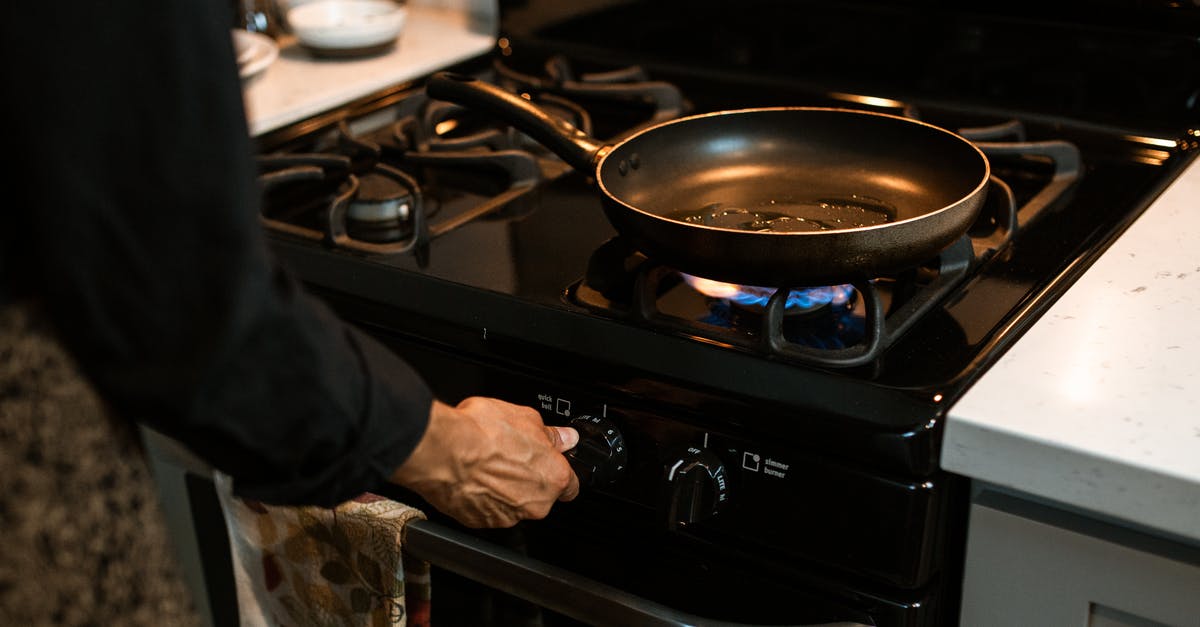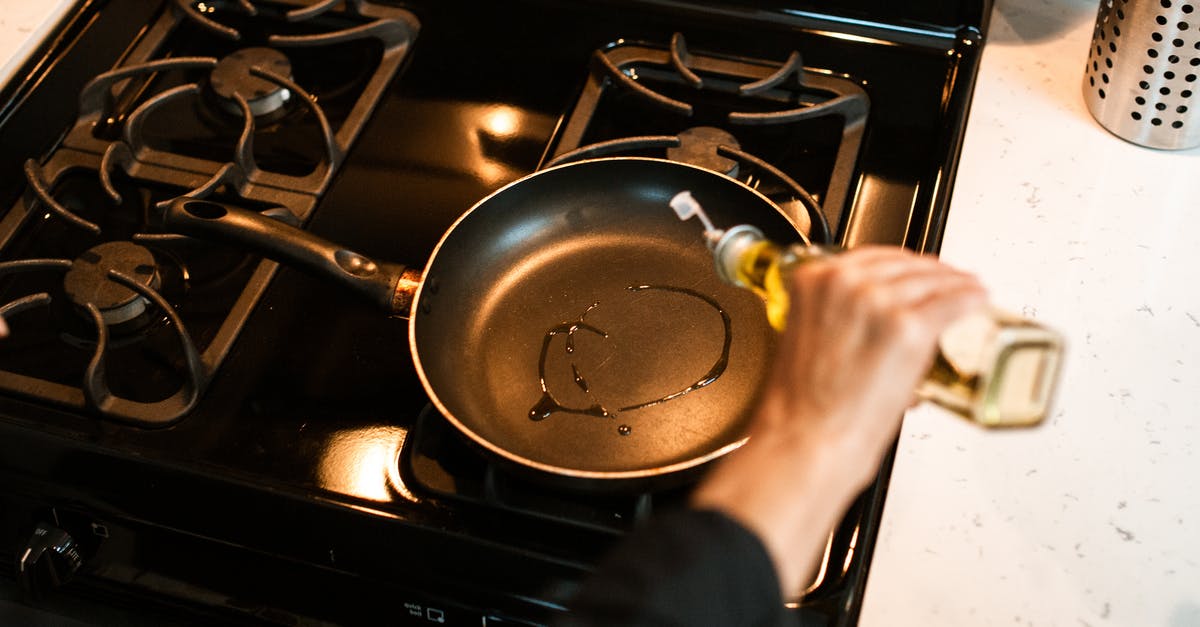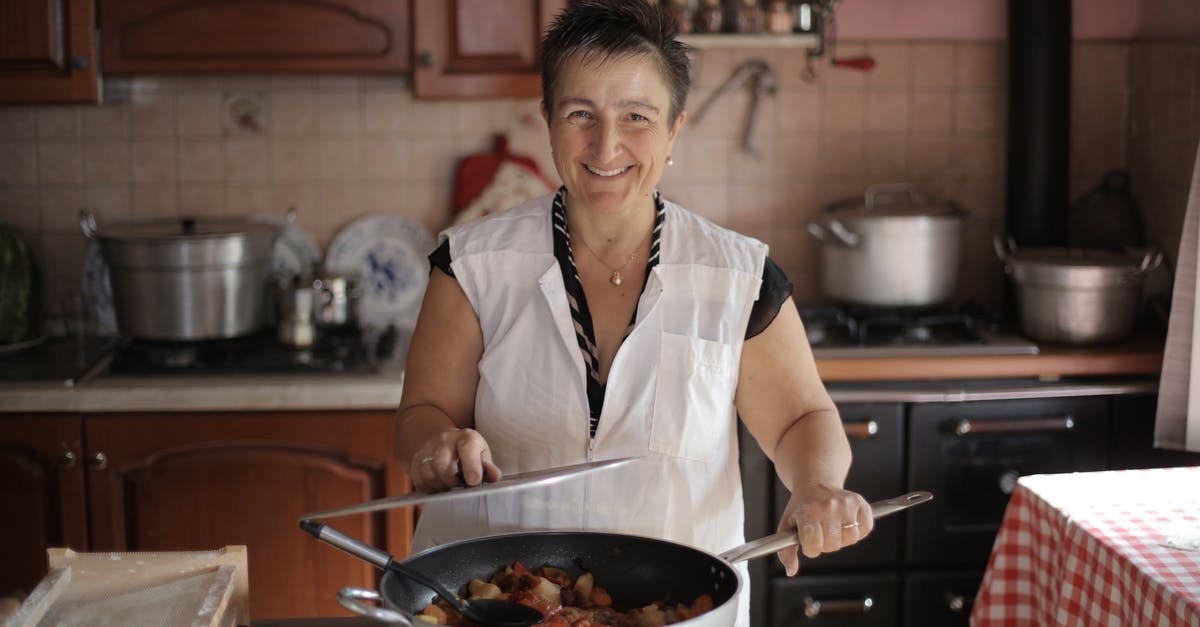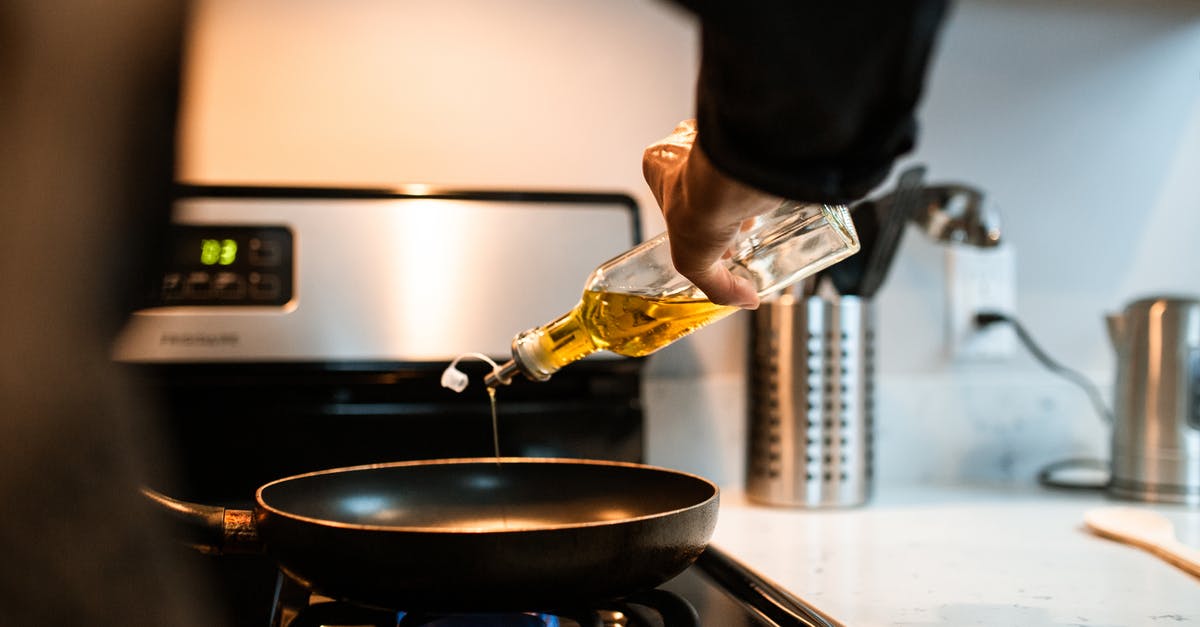Thicker steak: pan seared then oven

If I use cast iron pan to sear it, and then put in the oven I have some questions:
If I sear it from both sides, one side 2 minutes, other 1 minute, and then put in oven for 6 minutes. Do I have to flip it half way? I wouldn't like one side to burn since the pan will be sizzling hot and will burn one side in the oven in those 6 minutes?
What is the usual temperature of the oven for this technique?
Shall I broil it, or have it somewhere in the middle?
Best Answer
- If I sear it from both sides, one side 2 minutes, other 1 minute, and then put in oven for 6 minutes.
Note that required oven time will depend significantly on steak thickness and oven temp.
- Do I have to flip it half way? I wouldn't like one side to burn since the pan will be sizzling hot and will burn one side in the oven in those 6 minutes?
It isn't necessary in all circumstances, but generally it will help to flip at least once. This is particularly important if transferring a heavy pan (like cast iron) into the oven.
- What is the usual temperature of the oven for this technique?
Varies. Almost any oven temperature can work. The question is whether you want to cook your steak faster or want it to be more evenly cooked. The hotter the oven, the faster your steak will cook, but you'll have a thicker "gradient" from well-done to raw in the middle. In other words, the faster you cook, the thicker the gray "well-done" part will be near the surface in order to get the center up to temperature.
A very low oven might require you to cook the steak longer (perhaps even 30 minutes or more, depending on how low you go and how thick the steak is), but there's a better chance it will be close to "medium rare" (or whatever you like) all the way through. It will likely also be more tender and the fat will be softer.
Most people seem to like cooking steaks quickly, but there's no real benefit to a hotter oven other than getting the steak done faster.
- Shall I broil it, or have it somewhere in the middle?
Depends on what you're trying to do. Broilers cook by radiant heat, so they will likely cause more surface browning to occur. If your steak isn't dark enough after the sear and you want more browning on the surface, then broil. But broiling also tends to be a very high heat technique, so this is again more likely to produce a larger gradient in doneness. If broiling (particularly close to the broiler), flipping frequently is recommended.
Pictures about "Thicker steak: pan seared then oven"



Should I put my steak in the oven after searing?
The best way to cook a perfect steak is to pan-sear it and finish it in the oven. It's a great and super easy method.Can you pan-sear a thick steak?
Start With Quality MeatThe pan-sear method will work for either thin or thick steaks. For thick cuts\u2014such as ribeye, strip steak, or T-bone\u2014choose steaks that are 1 1/2 to 2 inches thick for maximum juiciness. If you want to cook a thinner steak, look for flank, hangar or skirt steak.Do you sear a steak before or after putting it in the oven?
Sear the steaks for 2 to 3 minutes on each side. After the steaks are seared, put the pan directly into the oven and roast the steaks to a desired doneness using the timing suggestions in the chart below. Transfer the steaks to dinner plates or a platter, and let rest 5 minutes before slicing and serving.What is the best way to cook a thick piece of steak?
To cook a thick steak, you need a heavy pan -- preferably cast iron -- and a two-step cooking process, followed by a rest period to complete the cooking and redistribute the juices. This steak is generously seasoned, then seared on the stove top and finally roasted in a hot oven.How To Cook Best Pan Seared Steak (Oven Finished) Recipe
More answers regarding thicker steak: pan seared then oven
Answer 2
Alton Brown did an episode on this actually, and the technique works perfectly:
Place a 10-to-12-inch cast-iron skillet in the oven and heat the oven to 500 F. Bring the steak to room temperature.
When the oven reaches temperature, remove the skillet and place on the range over high heat for 5 minutes. Coat the steak lightly with oil and sprinkle both sides with a generous pinch of salt. Grind on black pepper.
Immediately place the steak in the middle of the hot, dry skillet. Cook 30 seconds without moving. Turn with tongs and cook another 30 seconds, then put the pan straight into the oven for 2 minutes. Flip the steak and cook for another 2 minutes.
This time is for medium-rare steak. If you prefer medium, add a minute to both of the oven turns.
Remove the steak from the skillet, cover loosely with foil and rest for 2-5 minutes.
I would take note of the thickness of your steak and insert a probe thermometer in it while it's cooking so you know how long it takes to reach the doneness that you like.
I personally just put the pan in the oven and when it reaches 500F I take it out and put it on the burner over high heat. Cook for 30-60 seconds per side, and then put it in the oven for 4 minutes, flipping halfway through. Put the steak on a cutting board with a pat of butter and some finishing salt, and rest for 5-10 minutes.
Oh, and please remember to put an oven mitt on or something to warn you that the pan is going to be extremely hot. I've made this mistake more than once, and it's not fun.
Answer 3
I've found a reverse sear gives me a greater margin for error - much harder to screw up. It works like this:
- Heat the oven to a low temperature, like 250 degrees Fahrenheit.
- Salt the steak and put it on a baking rack. If you have one, insert a probe thermometer into the thickest part of the steak. Put the rack in the oven.
- Watch the temperature until the steak reaches 15-20 degrees of your desired final temp. (100 for rare - but experiment with your thermometer.) As the steak nears its temp, get your pan ripping hot.
- Remove the steak from the oven and sear it with a small amount of oil in the now very hot pan. Flip every 30-60 seconds until you have a good crust going (2-3 minutes).
- Remove the steak from the pan and let it rest on your baking rack for a few minutes.
- Enjoy.
This technique is based on some things I learned from Kenji: http://www.seriouseats.com/2012/12/the-food-lab-complete-guide-to-pan-seared-steaks.html
Sources: Stack Exchange - This article follows the attribution requirements of Stack Exchange and is licensed under CC BY-SA 3.0.
Images: RODNAE Productions, RODNAE Productions, Andrea Piacquadio, RODNAE Productions
